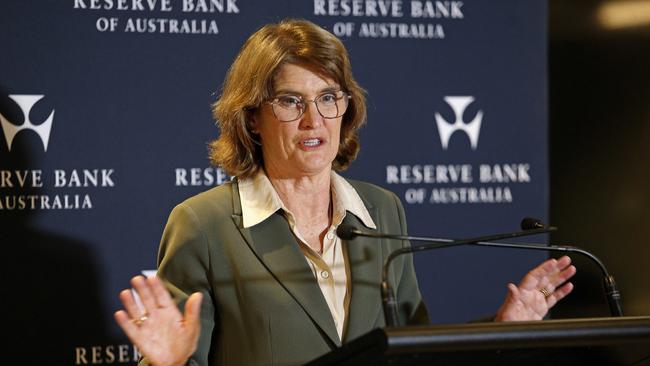Mood brightens on interest rates outlook, but no credit to ALP
Voters are shedding some of their pessimism over the economy, but the more upbeat mood seems to have been overwhelmingly driven by growing hopes that the Reserve Bank could soon cut interest rates rather than Labor’s latest tranche of cost-of-living relief.

Voters are shedding some of their pessimism over the economy, but the more upbeat mood seems to have been overwhelmingly driven by hopes that the Reserve Bank could soon cut interest rates rather than Labor’s latest tranche of cost-of-living relief.
With the RBA not discussing the case for a rate hike at its September meeting, the first time it eschewed the option since March, central bank watchers are growing confident it could soon lower interest rates, thereby easing costs for household borrowers. Money markets ascribe a 92 per cent chance of a quarter-point rate cut at the RBA’s first two-day board meeting for 2025, scheduled for February 17-18.
Most economists are also tipping a move lower then.
Westpac’s head of Australian macro-forecasting, Matthew Hassan, said the shift in interest rate expectations was the primary driver of an improvement in Australians’ view of the economy.
“Consumers are really waiting for that decisive signal that inflation’s back under control, and alongside that a decisive message from the RBA that inflation is back under control,” he said.
“We might get the occasional sort of burst of improvement but we don’t really see that with the [stage-three] tax cuts.”
He warned it could take “several years” for real incomes to recover from the spate of rising consumer prices.
Released on Tuesday, ANZ consumer sentiment data showed households were more upbeat about the economy’s trajectory, with confidence over the next 12 months rising to 80 points, up from 78 points last month.
Westpac’s separate consumer sentiment index, released last week, jumped 6.2 per cent to its highest level since the RBA began its tightening cycle 2½ years ago, with households no longer worried about the prospect of increasing interest rates.
While those findings suggest some improvement for the Albanese government’s re-election prospects, consumer sentiment continues to remain well below its pre-pandemic trends, and it is yet to translate to any material lift in spending.
Even as households have been showered with support, with incomes buoyed by Labor’s recent tax cuts, data released by Commonwealth Bank on Tuesday showed consumer spending slumped in September, as taxpayers chose to save, not spend, the additional relief.
“Increased take-home pay from tax cuts is largely being used to pay down debt and on staples, not spending on discretionary items,” CBA chief economist Stephen Halmarick said.
Through September, hospitality recorded the biggest spending decline, down 2.8 per cent, while transport spending also declined, off 2.5 per cent, owing to a reduction in petrol prices.
The spending slowdown was a likely payback for the uptick in August, CBA’s Mr Halmarick said, when consumers splashed out on household goods and hospitality during an early Father’s Day.
John Scales, managing director of JWS Research, an opinion polling and consumer research firm, ascribed the improvement in sentiment to the adjustment in household budgets rather than government cost-of-living relief.
“That doesn’t translate to voter credit for [Labor], all they’re doing is easing a bit of extreme pain back to almost tolerable pain,” Mr Scales said.




To join the conversation, please log in. Don't have an account? Register
Join the conversation, you are commenting as Logout